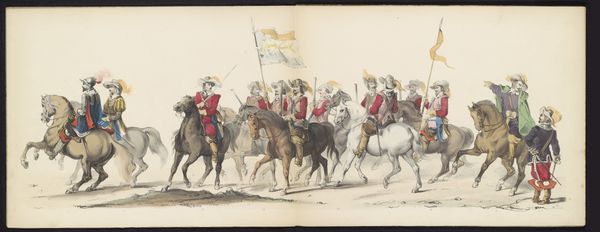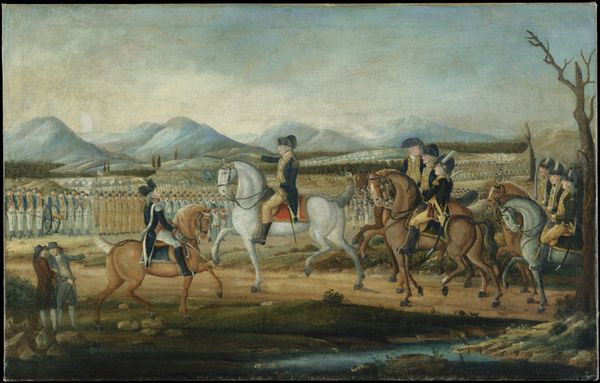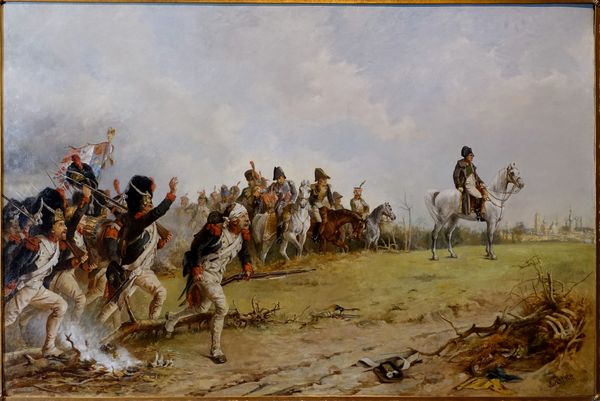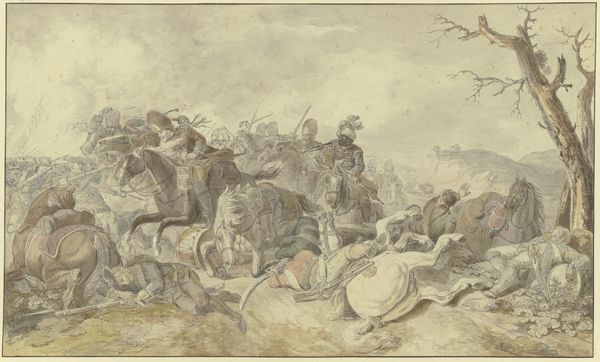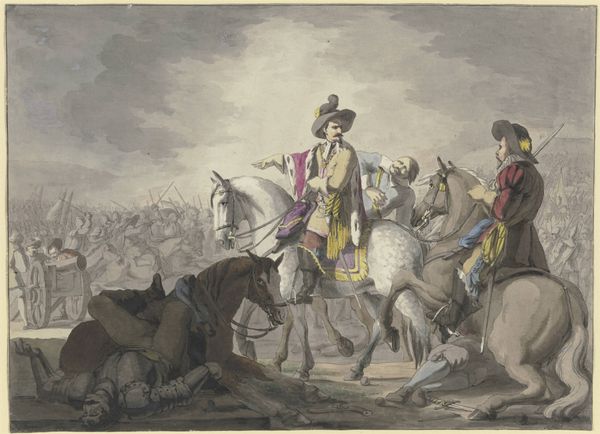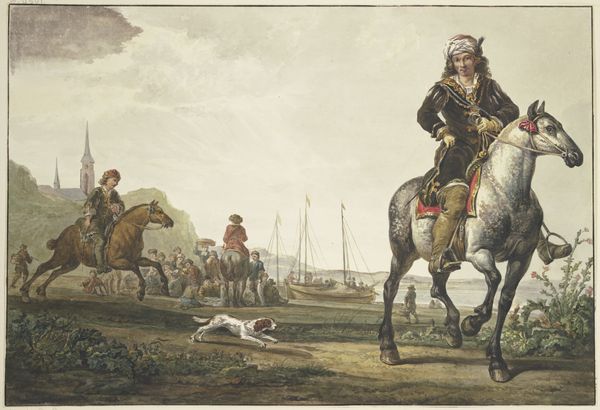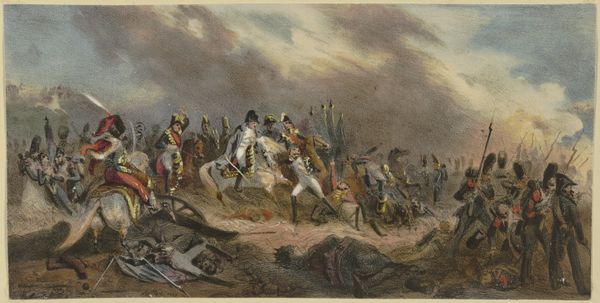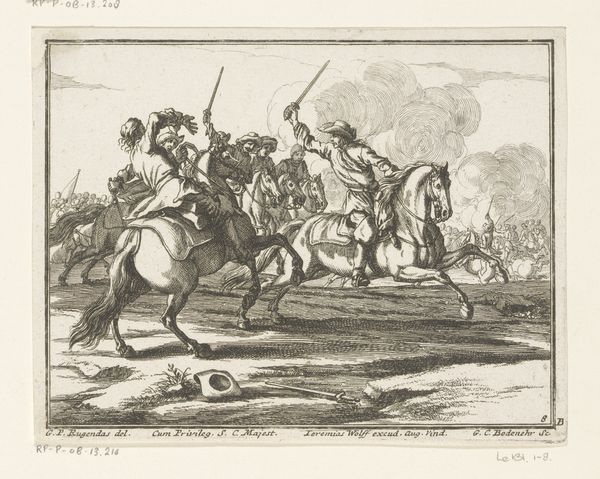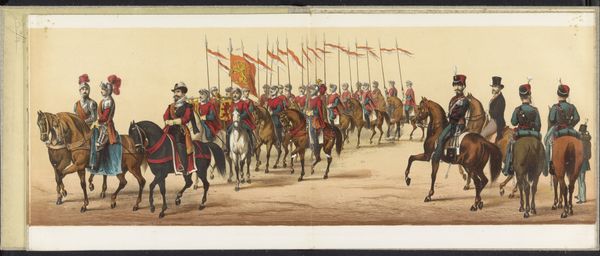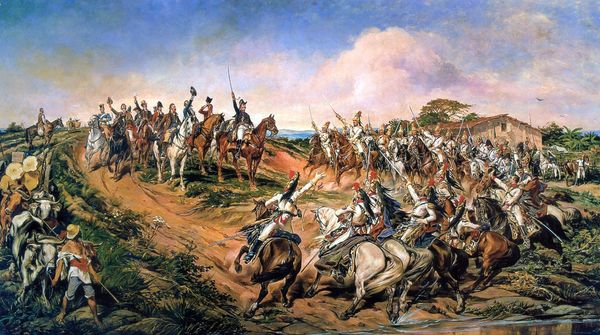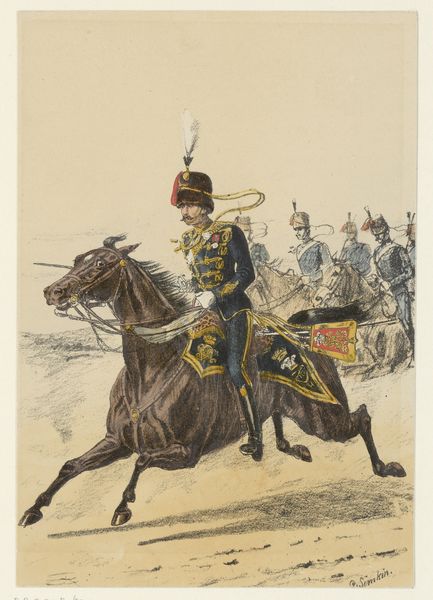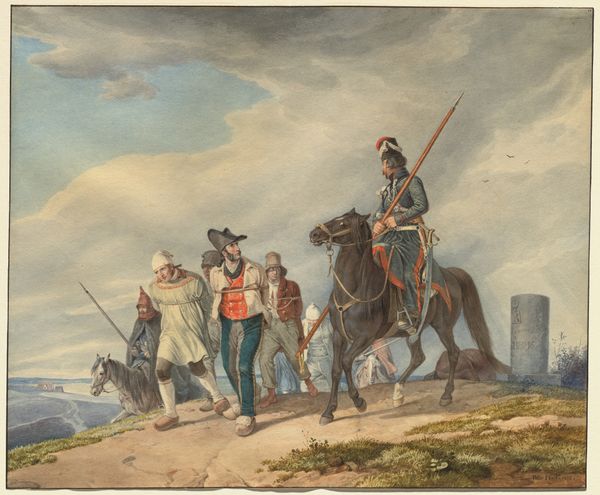
drawing, coloured-pencil, painting, gouache, paper, watercolor
#
drawing
#
coloured-pencil
#
narrative-art
#
painting
#
gouache
#
caricature
#
figuration
#
paper
#
watercolor
#
coloured pencil
#
romanticism
#
watercolour illustration
#
genre-painting
#
history-painting
#
miniature
Copyright: Public Domain
Editor: This spirited work, “Reiterkampf zwischen Kosaken und Franzosen” by Carl Adolph Heinrich Hess, completed in 1818, is quite striking. The use of gouache, watercolour, and coloured pencil on paper gives it a unique texture. What is particularly intriguing is the evident dynamism—how do you interpret the scene, considering its materials and construction? Curator: This piece presents an interesting case study in artistic production and its ties to social narratives. The choice of gouache, watercolour, and colored pencil – media often associated with preparatory sketches or popular illustration – signals a deliberate downplaying of "high art" pretenses. Hess utilizes these readily available, and perhaps less costly materials, to depict a scene of Cossack and French soldiers in conflict. We must ask ourselves, what kind of labor went into both sides and what would that represent within art production in the romanticism movement? Editor: So, you're saying that the selection of materials is not just aesthetic, but also speaks to the labor involved and perhaps even the intended audience? Does that have bearing on how the artist approaches a historical moment of this importance? Curator: Precisely! Consider the implications. Is Hess perhaps critiquing the glorification of war by using accessible, 'low-brow' materials to depict this chaotic clash? The materials, typically associated with craft rather than fine art, create an immediate tension. He also emphasizes the material realities of warfare itself – the horses, the uniforms, the weapons. Can this speak of a consumerism in art at that time, maybe not by intention, but by coincidence? Editor: That's a compelling thought. By using these common materials, he makes the subject matter almost… more relatable? Or perhaps less precious? I hadn’t considered the economic aspect of art creation quite like that. Curator: Indeed. And the social context surrounding its making: What sociopolitical circumstances enabled Carl Adolph Heinrich Hess to use gouache, watercolour, and coloured pencil for this depiction? Also how readily the artist had to use them at that period. This intersection between artistic choice and broader social context offers valuable insight. Editor: I'm finding a new perspective on considering materials in context of creation and societal views! Curator: Wonderful, the materiality offers a new context to explore.
Comments
No comments
Be the first to comment and join the conversation on the ultimate creative platform.
